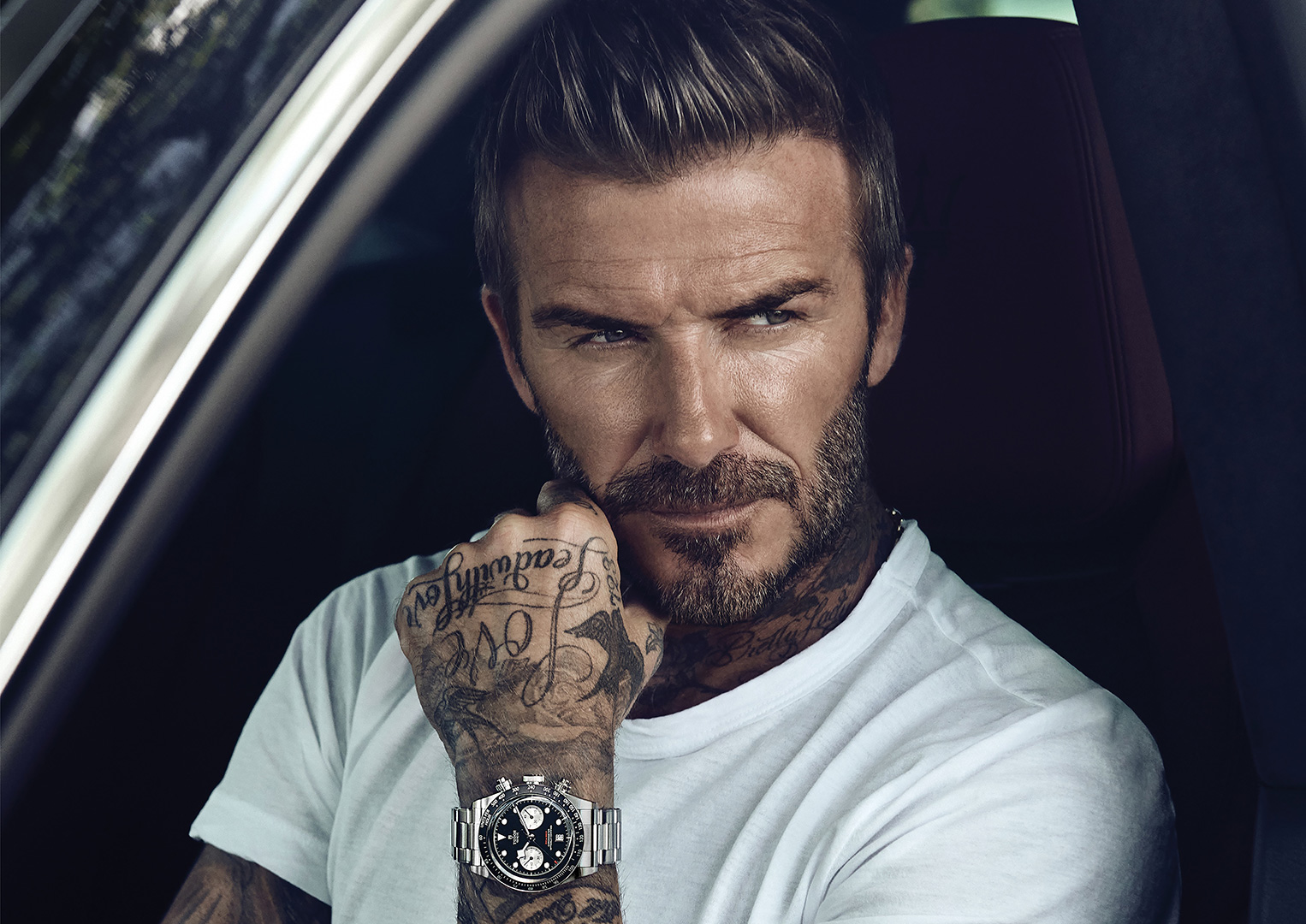Feature: Why Does Rolex STILL Hate Football?
Rolex’s first ever brand ambassador wasn’t a movie star, an astronaut or even someone who was a household name. It was a 26-year-old endurance swimmer by the name of Mercedes Gleitze who famously wore a Rolex Oyster in her attempts to cross the English Channel in the late 1920s. (When Gleitze finally set the record she wasn’t actually wearing the watch, but, hey, that’s another story.)
Since then Rolex has enlisted dozens of carefully selected high-profile people to endorse its watches, or at least used their famous exploits in its advertising campaigns.
From elite golfers to Oscar-winning film directors, record-breaking aviators to opera singers like the great Spanish tenor Placido Domingo, the cast of Rolex faces has been as diverse as its timepieces. It’s even surprised us over the years with a few leftfield choices.
Frederick Forsyth, best-selling author of The Day of the Jackal, appeared in several slightly bizarre Rolex adverts in the 1980s showing off his yellow-gold Day-Date and talking as much about his latest book as the watch. It’s difficult to imagine a modern Rolex Explorer advert in which, say, Andy McNab talks about his latest pot-boiler.
But when it comes to footballers (or ‘soccer players’ as our US friends like to call them), Rolex is unyielding. Football, it seems, has never been exclusive enough for the crown.
You get the feeling that snooty old Rolex would rather sponsor the current North Korean tiddlywinks champion than the likes of Ronaldo and Neymar?

Neymar owns some incredible Rolexes, but would the brand make him an official ambassador? Probably not
Rolex Is A Hold-Out
Rolex’s aversion to football was understandable a few decades ago when the sport was about as glamorous as a bacon sandwich, and back then it wasn’t the only luxury watch brand that shunned the game. While footballers advertised products as varied as cars and rancid Old Spice aftershave (eau de grandpa, anyone?) they were of no interest to the upper echelons of the watch industry.
In 1950s England, footballers earned roughly the same salary as teachers and certainly wouldn’t have spent their free time indulging in Bond Street spending sprees and getting fake tans. They caught the bus to the training ground, lived in 3-bedroom houses, and not even Pele in his 1970s heyday would have driven around in a top-of-the-range sports car.
But times have changed. Currently, three of the top five highest paid athletes in the world are footballers and the average weekly pay for a Premier League footballer is around the price of a brand-new Royal Oak chronograph (in gold obviously)!
As for the fans, football is no longer the preserve of the working classes. Season ticket holders at top clubs can opt for luxury packages that get you fancy seats and gourmet food rather than a standing spot on a urine-streaked concrete terrace and a gristle-riddled half-time pie.

Hublot has embraced football; Rolex, however, continues to give it a wide berth
Other luxury watchmakers have gradually acknowledged this socio-economic shift and softened their stance. A look at the current ambassadors of other brands reveals a growing acceptance of the footballing world, with Lionel Messi at Audemars Piguet, Kylian Mbappe (above) at Hublot (the brand that has embraced football like no other), Ronaldo at TAG Heuer and the ever-marketable David Beckham now at Rolex’s sister brand Tudor after an earlier flirtation with Breitling.
But Rolex? It’s been as stubborn as an ageing mule being dragged to the dog-food factory.
Footballers Wear Rolex Anyway!
Of course, this doesn’t mean that the indifference Rolex shows to footballers is reciprocated. On the contrary, top-flight players, far from giving football-hating Rolex the cold shoulder, seem to wear the brand more than ever.
Despite being the most prominent ambassador for Tudor, a ban on wearing Rolex clearly isn’t written into David Beckham’s contract. The style icon, who retired from the game in 2013, has been seen wearing everything from a yellow gold Yachtmaster to a Sky-Dweller in rose gold.

The hugely in-demand new Rolex GMT-Master II has already found its way onto the wrists of top players
And Rolex ADs clearly have footballers at the very top of their waiting list as the Rolex GMT-Master II left-hand model unveiled at this year’s Watches & Wonders appeared on several footballers’ wrists within a few weeks of its launch. Real Madrid’s Karim Benzema, West Ham’s Declan Rice and Zlatan Ibrahimovic have all been seen wearing the in-demand ‘Sprite’, as its been nicknamed.
Baby Steps
For all its conservatism, Rolex likes to throw up a surprise now and again, so the prospects of it eventually softening its attitude to football are about as likely as humans landing on Mars—in other words, remote but far from impossible.
Perhaps enlisting Beckham as a brand ambassador for Tudor is a sign that Rolex is testing the water, sussing out whether a footballer—albeit a retired one as much known for his fashion choices as his career on the pitch—is compatible with luxury watches.

Although a Tudor ambassador, Becks is partial to a vintage Rolex, too
Beckham remains the only footballer on Tudor’s books but not its only athlete; they also signed up All Blacks rugby star Beauden Barrett.
In a fairer world Rolex’s continued aversion to football no longer makes sense. It just makes it look like a bit of snob. It’s not as if every football fan can suddenly go out and buy themselves a brand-new Rolex, which is what it seems to fear.
In a year where the World Cup is taking place in one of the world’s biggest luxury watch-loving regions, the Middle East, surely it’s time for Rolex to show some love for football and finally offer the hand of friendship to the Beautiful Game.
Looking for a pre-owned Rolex watch? Click here to shop now




